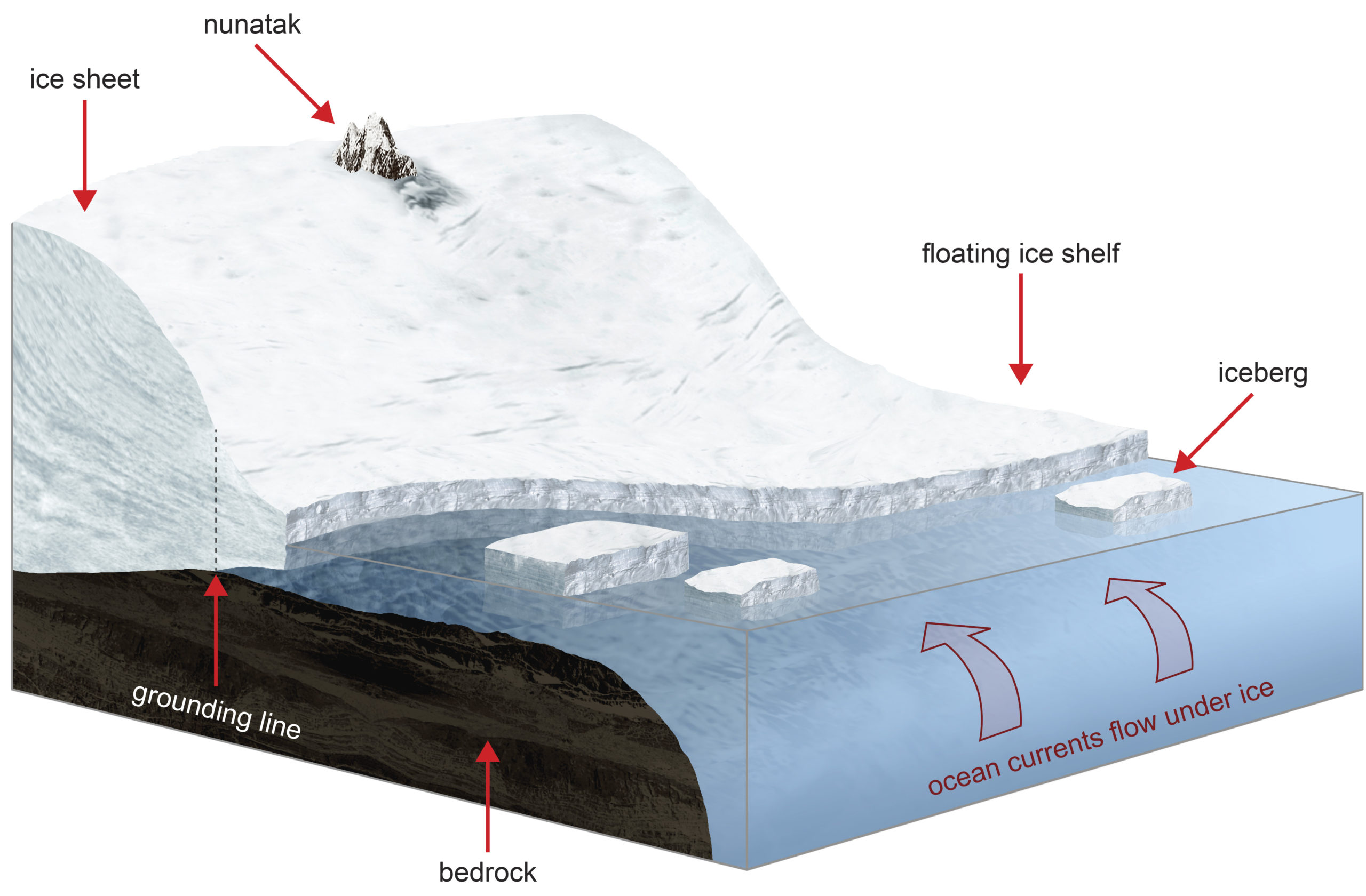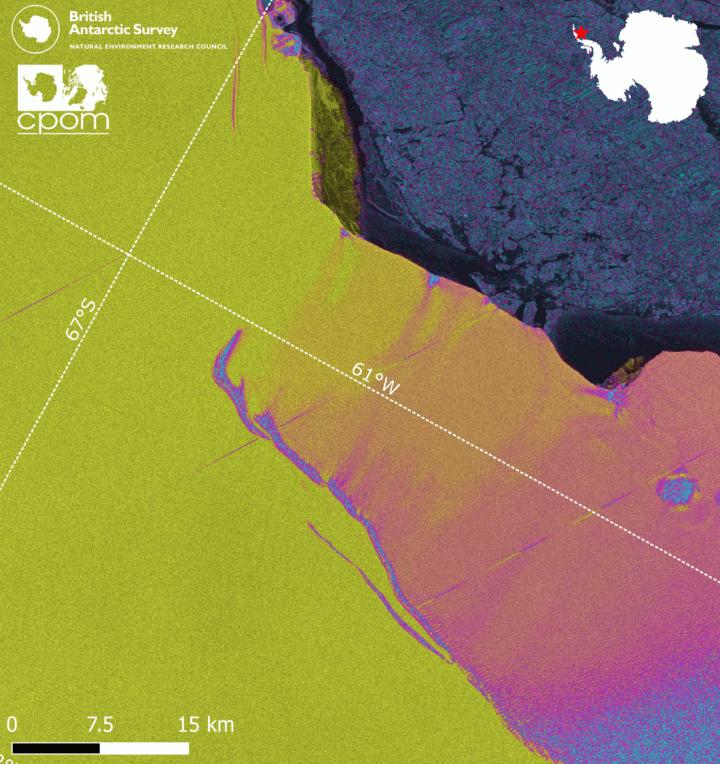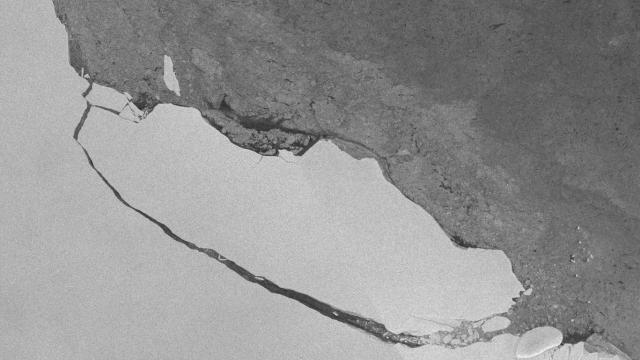Last month, humanity watched with a mixture of awe and terror as an iceberg half the size of Jamaica broke clean off the Antarctic Peninsula. But the story isn’t over for Larsen C, or its recently-shed belly fat, the iceberg now known as A68. As both ‘berg and shelf continue to transform before our eyes, they’re proving to be a scientific goldmine for researchers.
View of the A68 iceberg captured by the ESA’s Sentinel-1 satellite on July 30. Image: A. Fleming, British Antarctic Survey
A commentary published today in Nature Climate Change offers a run-down of some of the impacts we’ve seen since A68 made its big break on July 12, separating from the Larsen C ice shelf after months of nail-biting anticipation. Many of the researchers’ findings are things we’ve reported on already — the berg is starting to drift away to the north and crack up into smaller bergs, for instance. But as the breakup of A68 and the Larsen C ice shelf continues, scientists are becoming increasingly focused on a singular question: Was this event the, ahem, tip of the iceberg for Larsen C?
“The satellite images reveal a lot of continuing action on Larsen-C Ice Shelf,” glaciologist and study co-author Anna Hogg said in a statement. “We can see that the remaining cracks continue to grow towards a feature called Bawden Ice Rise, which provides important structural support for the remaining ice shelf. If an ice shelf loses contact with the ice rise, either through sustained thinning or a large iceberg calving event, it can prompt a significant acceleration in ice speed, and possibly further destabilisation.”

Illustration of the Larsen C ice shelf depicting key features and processes. Image: British Antarctic Survey
The possibility of further ice shelf destabilisation is one scientists have been debating for years, and there are conflicting opinions. Larsen C is currently at its smallest size since satellite-record keeping began, and other ice shelves along the Antarctic Peninsula have been retreating for decades — in part, scientists believe, due to climate change. But whether what’s left of Larsen C will continue to break up in wake of the recent calving event depends on many factors, including how much structural support the ‘berg provided to the rest of the shelf, and whether the shelf becomes untethered at key pinning points, such as the Bawden Ice Rise.

Satellite data showing the growth of cracks on the Larsen C ice shelf before the massive berg broke free. Image: A.E. Hogg, CPOM, University of Leeds
What’s clear is that scientists are hungry for the fresh imagery coming in every week from NASA and European Space Agency-led satellites. While Larsen C’s recent breakup is consistent with the natural calving cycles of ice shelves, it has also become something of a scientific experiment. Scientists will feed the data from this experiment into models, and hopefully develop a better picture of how other Antarctic glaciers will fare — and how quickly they will disintegrate — in a warming world.
“We will continue to use multiple types of satellite data, carefully collected by space agencies around the world, such as ESA and NASA,” Hogg told Gizmodo in an email. “We will combine these observations, with ice flow models to test our ideas about how the remaining shelf has responded to the iceberg calving event, and most importantly, what the physical processes responsible for driving this change are.”
“I think it’s safe to say that we are probably only 50% way through the story of Larsen-C,” she added.
